Images reveal empty Wedgwood site ravaged by time
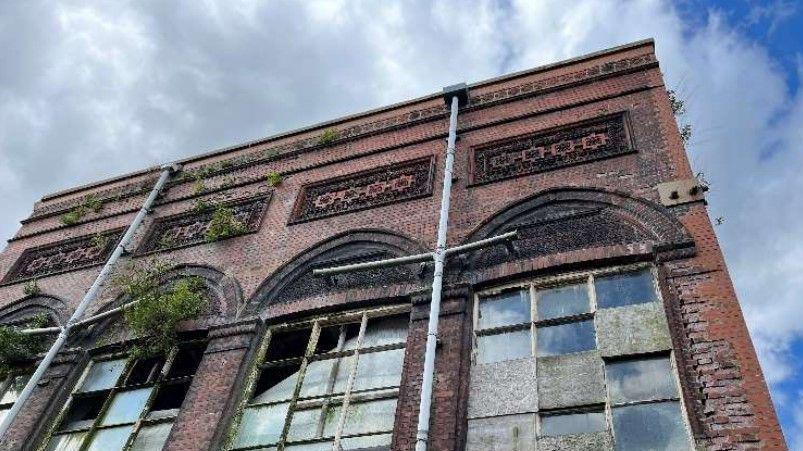
A number of windows at the building are broken, and vegetation is growing from parts of the brickwork
- Published
Long ago, this building had a striking design - one fitting of the man in whose memory it was built.
More than a century and a half later, nature is doing its best to reclaim the disused Wedgwood Institute in Burslem, Stoke-on-Trent, where people have been unable to set foot for 16 years, despite its link to the city's pottery heritage.
Fresh images reveal what is going on inside and out at the grade II* listed building, where vegetation emerges from brickwork, water causes rot, and parts of the ceiling and a staircase have collapsed.
It is on Historic England's Heritage At Risk Register, where its condition is described as poor. But in response, there are plans to halt the slide.
The cost of the project is to be covered by an award of £300,000 - announced earlier this year following a pledge by Historic England to improve conditions.
The city council said at the time the money would not solve all of the building’s problems but it would help to bring the site back into public use.
The building on Queen Street was built in the 1860s in memory of potter and philanthropist Josiah Wedgwood and was intended as a place to run courses on science, business and the arts for Burslem's working men.
Situated within the Burslem Conservation Area, it has been empty since 2008, prior to which it was used as a library.
“It is not the intention... to refurbish the building for reoccupation,” according to documents submitted as part of a council planning application for the work.
“The intention is to safeguard the structure, recognising the significance of the building and its interior and prevent further deterioration in anticipation of a future refurbishment.”
And safeguarding it would appear to need, going by new photographs.
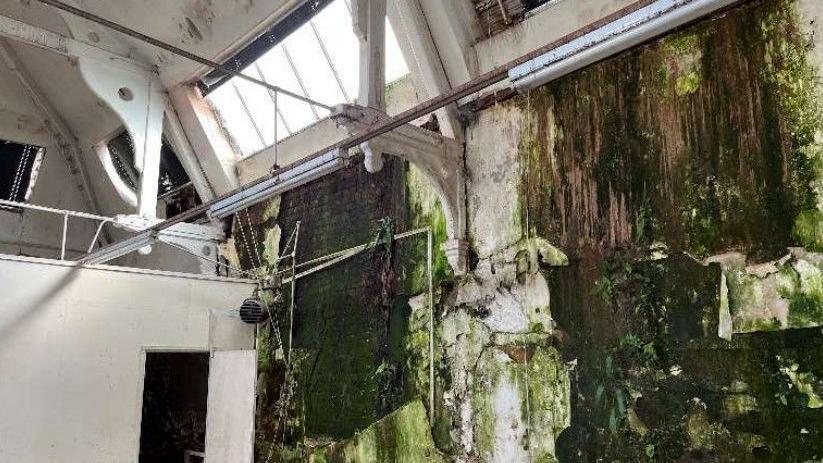
Inside, there is damage to the internal walls as a result of water seeping into the building
The planning documents state the external facade of the building is mostly intact and the Victorian Gothic style of the building - including the brickwork and terracotta detailing and decorative friezes - remains in good condition.
Inside, the structure is mostly the same as it was originally, but a defective downpipe has led to water seeping in and damaging some of the building’s fabric.
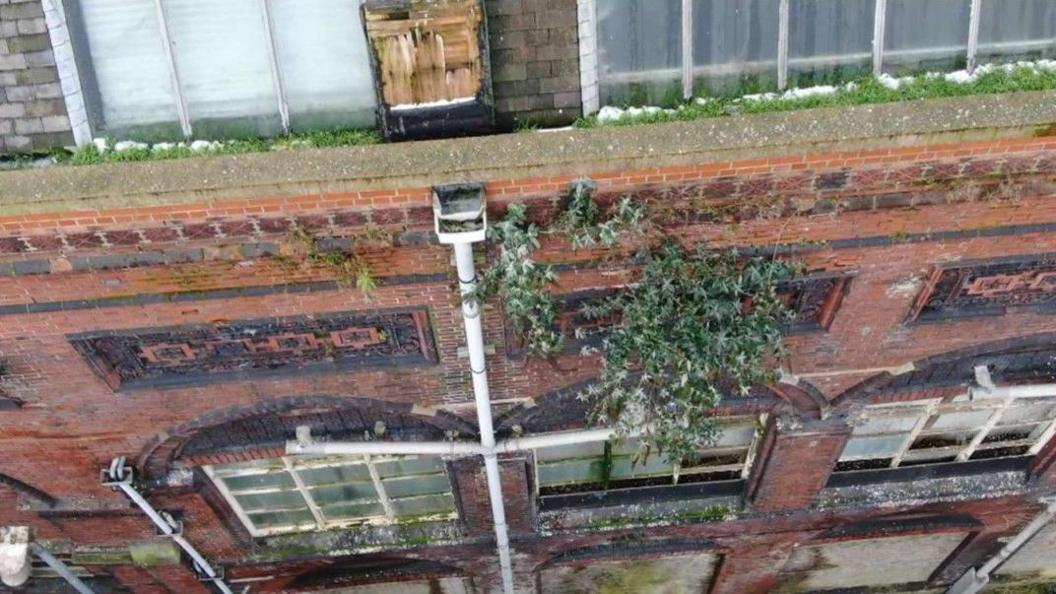
Aerial views show the extent to which vegetation has taken hold in crevices
The planning documents stated: “In some parts of the building, the deterioration is extensive with outbreaks of dry rot and timber degradation.”
They added: “There has been deterioration of the original finishes due to water ingress and vandalism since the building has remained unoccupied.”
Parts of the ceiling have collapsed, as have some of the staircases, according to the documents.
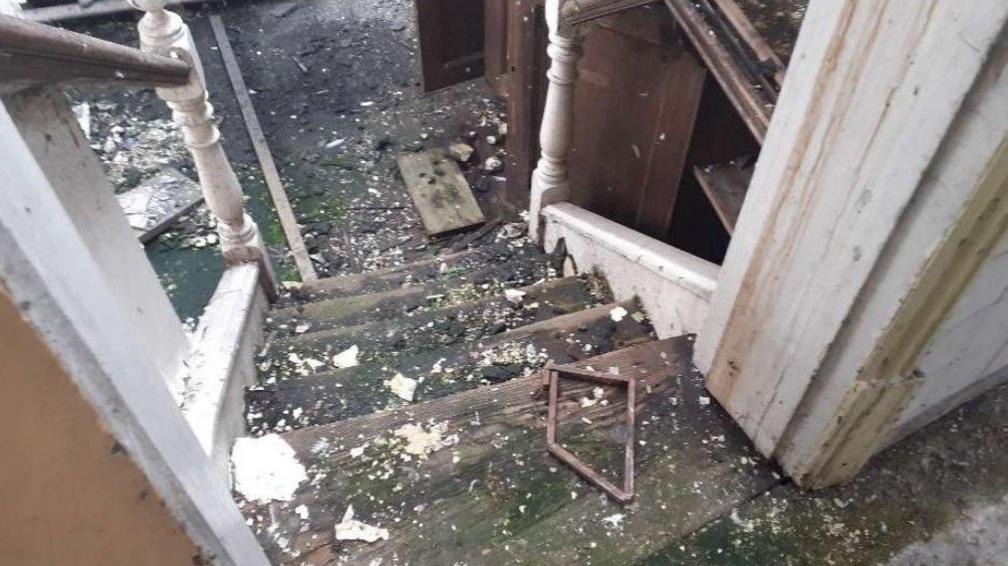
A staircase in the building has partially collapsed
The proposed work includes repairing the roof and external facades of the institute as well as replacement of defective brickwork with new bricks.
In addition, rooflights and sloped roof windows will be replaced with new metal-framed heritage rooflights and sloped roof windows, subject to planning permissions.
Get in touch
Tell us which stories we should cover in Staffordshire
Follow BBC Stoke & Staffordshire on BBC Sounds, Facebook, external, X, external and Instagram, external.
- Published31 March 2024
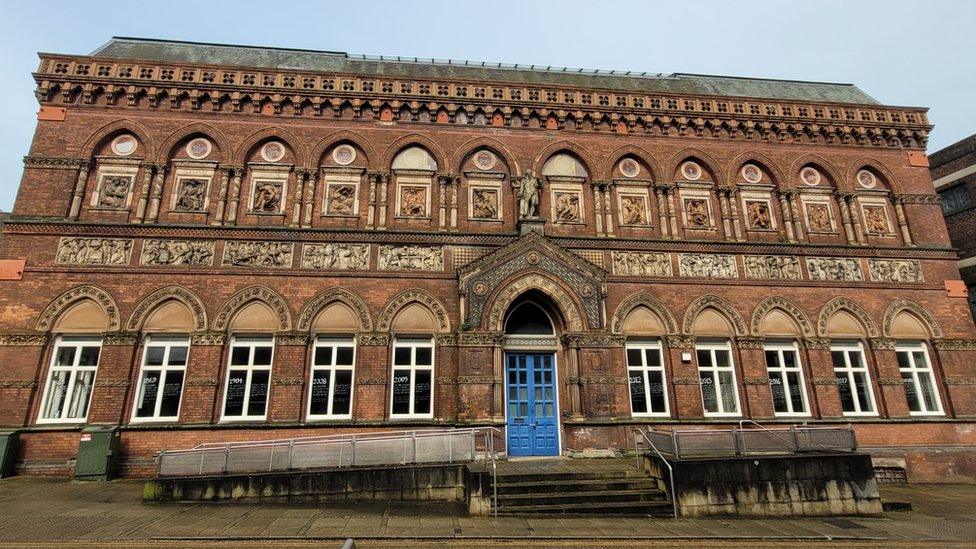
- Published25 February 2015
- Published21 June 2014
- Published16 May 2013